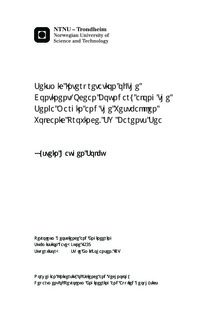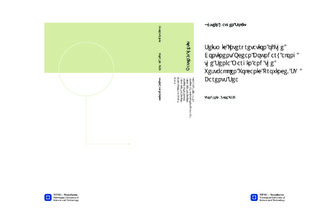| dc.description.abstract | Continental breakup between Eurasia and Greenland led to the formation of the present day continental margin in the Barents Sea. This margin evolved along a large strike-slip zone, called the De Geer Zone with oceanic spreading propagating parallel to this zone. In this study, six 2D seismic lines from the ?Havretst Bjørnøya Vest? (HB) survey have been examined and interpreted in an attempt to identify seismic signatures associated with the Continent-Ocean Boundary (COB) in this passive continental margin.
The method used when interpreting the seismic lines is divided in three stages: Observations, Interpretation and Discussion. The observation phase is an objective description of the seismic reflections. In the interpretation stage, the observations are tracked, compared to the observa-tions in other lines, and connected to geological structures. These connections are further in-vestigated and tied to the geological evolution of the margin in the discussion phase.
All the seismic lines show a similar characteristic, with two distinctly different sections. In the upper section, consisting of post-breakup sediments, the resolution is high, and reflections relatively easy to track. The seismic reflections in the bottom section are masked, resulting in chaotic, low amplitude reflections resembling noise. Between these sections a strong, positive reflection is seen. It is divided into High Amplitude Sequence (HAS) 1 and 2, based on its depth and signature. These are interpreted as the top oceanic reflector and the continental volcanic extrusives respectively. Basalts in both sequences are the reason for the seismic masking.
The complex geology between HAS1 and HAS2 are interpreted as the Continent-Ocean Tran-sition. In this area it is hard to see the difference between the signatures of the two crusts. Continental Marginal Ridge (CMR) is interpreted from highs found in several of the seismic lines in this transition. This is stretching along the continental margin, and its western bounda-ry is interpreted as the COB. How this ridge was created is uncertain, but several theories are presented, from heat transferred from the juxtaposed oceanic crust, to a volcanic origin.
Interpretations are presented in six geoseismic profiles, representing each seismic line, in ad-dition to a map of the area. This map show the interpreted location of the Eocene volcano from which the volcanic extrusives erupted, as well as the CMR and the COB. The map is compared to Libak et al., (2012), which studies of the same region. The interpretations are found to correspond well, apart from the CMR, which is not mentioned in his study. | |

